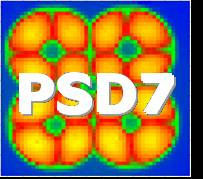Prof.
Robert Lewis
(Monash University, Australia)
13/09/2005, 11:00
New Techniques for Positron Emission Tomography
Invited Talk
Dr
David Hastings
(Christie Hospital)
13/09/2005, 11:30
New Techniques for Positron Emission Tomography
Contributed Talk
Background. Molecular imaging using an animal PET camera is a
powerful technique for studying the bio-distribution of
radiolabelled tracers and ligands, offering a means for in-vivo
assessment of new drugs and disease related biochemical processes.
The design of such imaging experiments must be guided by knowledge
of the performance characteristics of the PET camera. For example,...
Mr
Reynold Cooper
(University of Liverpool)
13/09/2005, 11:45
New Techniques for Positron Emission Tomography
Contributed Talk
The SmartPET project aims to exploit advances in the sensitivity,
speed, position and energy resolution of HPGe detectors to construct
a small animal Positron Emission Tomography (PET) system.
The small animal scanning system will consist of two planar HPGe
detectors separated by 109mm and housed in a rotating frame allowing
data acquisition over a full 180o range. Each detector...
Dr
Deborah Herbert
(INFN Pisa)
13/09/2005, 12:00
New Techniques for Positron Emission Tomography
Contributed Talk
Positron Emission Tomography (PET) for small animal studies requires
high-resolution gamma cameras with high sensitivity. Traditionally,
inorganic scintillators are used and, in recent times, coupled to
position sensitive PMTs. Such PSPMTs are costly, operated at high
voltage and have a relatively low packing fraction. However, their
advantage, compared to current solid state...
Mr
Alireza Sadrmomtaz
(University of Birmingham)
13/09/2005, 12:15
Novel Photon Detection Systems
Contributed Talk
Over the last 20 years, positron emission tomography (PET) has
developed as the most powerful functional imaging modality in
medicine. Over the same period, the University of Birmingham
Positron Imaging Centre has developed the use of positron emitting
tracers to study flow in engineering systems. Much of this work has
used the technique of positron emission particle tracking...
